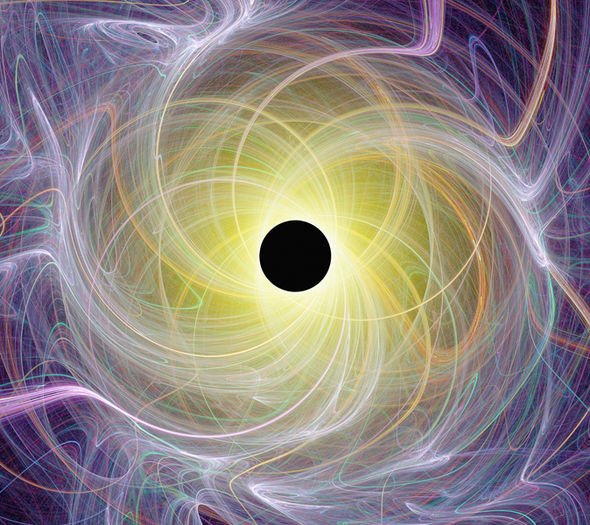“The dance between darkness and light will always remain— the stars and the moon will always need the darkness to be seen, the darkness will just not be worth having without the moon and the stars.” – C. JoyBell.C
Ever since the ancient times, our ancestors have believed in duality of nature. Darkness and light, sun and moon, sky and earth, male and female, yin-yang. We didn’t necessarily comprehend the scientific basis of duality, but we definitely understood the more philosophical and intuitional concept of ‘balance’. Every natural force has a counterpart, an entity to keep it in check. And since our world is a delicate and mysterious balance of science and philosophy equal part, there surely needs to exist a scientific basis for this phenomenon.
The term antimatter was first coined by Arthur Schuster in 1898. So what exactly is antimatter?
On an elementary level, it’s the opposite of matter. Now given that the scientific notion of ‘matter’ is integral for our discussion rather than the literal one, matter refers to anything that has mass, and occupies space. Now this doesn’t imply that antimatter is something that doesn’t have mass or doesn’t occupy space, more like its intrinsic properties will be opposing that of matter.
Matter is built up by atoms. Whether it’s the laptop I’m writing this essay on, whether it’s the charger I’ve already tripped on twice, or even me, we’re all matter and we’re all made up of atoms. Atoms combine to form molecules, molecules combine to form elements and elements together create this beautiful world we live in. Now the atom, according to Dalton’s theory was believed to be the smallest indivisible constituent of matter. But in 1895, when the electron was discovered by J.J Thomson, the world of atomic and nuclear physics changed. Now atom was known to possess constituent particles, namely electrons protons and neutrons.
The proton is a positively charged particle with a mass of around 1.6*10^-27kg which is, well, very less. The neutron is charge-less entity with nearly the same mass. Together the neutron and the proton form the nucleus. The electron, which is a negatively charged particle with a mass of around 9.1*10^-31 kg, even less than a proton, revolves around the neutron in a circular path, known as orbit. This is the internal structure of an atom. As of now an electron is known to be the smallest indivisible constituent of matter. But oh well, who knows….
Now you may be wondering what’s so intriguing and mysterious about these scientifically established facts, but here’s where our story takes a turn. Like every good story ours too has a hero, and a villain. And this villain, as you might have guessed, is antimatter. Personally I nicknamed it as the ‘annihilator’. Pretty good villain name plus that’s what it exactly does. Annihilates matter (pretty intense sibling rivalry).
As it turns out, when the universe was created there were equal amounts of matter, antimatter and dark matter (story for another day) floating up in space. Somehow even after huge amounts of mutual annihilation, enough matter survived to create the solar system and our living world, whereas the antimatter, not so lucky. It remained in space in very miniscule amounts, about 0.03%, but given the size of the universe, it was enough to carry researches on.
Antimatter was first thought of in 1928 by English physicist Paul Dirac, who New Scientist magazine called “the greatest British theorist since Sir Isaac Newton.” Dirac put together Einstein’s relativity equation (which postulates light is the fastest-moving thing in the universe) and quantum mechanics (which describes what happens in an atom), according to the magazine. He discovered the equation worked for electrons with negative charge or with protons having positive charges. Coming to how antimatter works. Suppose you were to ever come in contact with a body made up of your anti-particles (particles opposite in charge to the ones that make up your body), it is going to be Boom, gone. Boom, as in a huge explosion with lot of energy released and gone as in no trace left of either body. The energy released is even more than nuclear energy, which we all know the scope of (atomic bombs, hydrogen bombs, Hiroshima-Nagasaki, nasty stuff). Nuclear energy is not always used for highly destructive-million dollar- mega machines. Its also used for rocket propulsion, or as a fuel for any spacecraft. And this fact is what inspired scientists to think along the same lines for antimatter.
The design requires pellets of deuterium and tritium (heavy hydrogen isotopes with one or two neutrons in their nuclei, unlike common hydrogen that has no neutrons). An antiproton beam would then be beamed into the pellets, which would bash against a layer of uranium embedded inside. After the antiprotons strike the uranium, both would be destroyed and create fission products that would spark a fusion reaction. Properly directed, this could make a spacecraft move.
NASA cautions there is a huge drawback to this idea: it takes about $100 billion to create a milligram of antimatter. While research can make do with a lot less antimatter, this is the minimum that would be needed for application.
“To be commercially viable, this price would have to drop by about a factor of 10,000,” an agency wrote. Power generation creates another headache: “It costs far more energy to create antimatter than the energy one could get back from an antimatter reaction.”
Now every science theory, experiment, thesis or discovery is always going to have pros and cons, but personally as a budding scientist with a passionate interest in space technology, I aspire to work with this idea, or at least help in developing it further.
BY VANYA VERMA, INDIRAPURAM
















